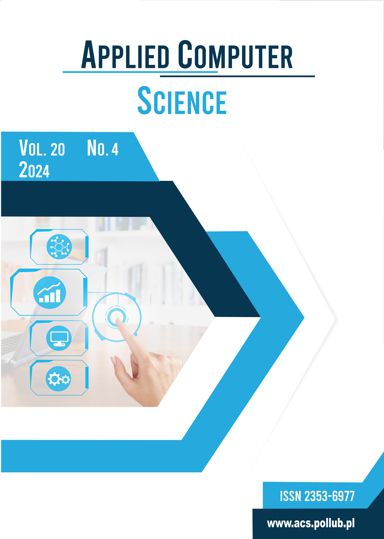Alemi Koohbanani, N., Jahanifar, M., Zamani Tajadin, N., & Rajpoot, N. (2020). NuClick: A Deep Learning framework for interactive segmentation of microscopic images. Medical Image Analysis, 65, 101771. https://doi.org/10.1016/j.media.2020.101771
DOI: https://doi.org/10.1016/j.media.2020.101771
Alpert, S., Galun, M., Basri, R., & Brandt, A. (2007). Image segmentation by probabilistic bottom-up aggregation and cue integration. 2007 IEEE Conference on Computer Vision and Pattern Recognition (pp. 1-8). IEEE. https://doi.org/10.1109/CVPR.2007.383017
DOI: https://doi.org/10.1109/CVPR.2007.383017
Arifin, A. Z., & Asano, A. (2005). Image thresholding by measuring the fuzzy sets. Information Dan Technology Seminar (pp. 189-194).
Boykov, Y. Y., & Jolly, M.-P. (2001). Interactive graph cuts for optimal boundary & region segmentation of objects in N-D images. Eighth IEEE International Conference on Computer Vision. ICCV 2001 (pp. 105-112). IEEE. https://doi.org/10.1109/ICCV.2001.937505
DOI: https://doi.org/10.1109/ICCV.2001.937505
Da Fonseca, G. B., Perret, B., Negrel, R., Cousty, J., & Guimarães, S. J. F. (2021). Fuzzy-Marker-Based segmentation using hierarchies. In J. Lindblad, F. Malmberg, & N. Sladoje (Eds.), Discrete Geometry and Mathematical Morphology (Vol. 12708, pp. 391–403). Springer International Publishing. https://doi.org/10.1007/978-3-030-76657-3_28
DOI: https://doi.org/10.1007/978-3-030-76657-3_28
Ding, Z., Wang, T., Sun, Q., & Chen, F. (2023). Rethinking click embedding for deep interactive image segmentation. IEEE Transactions on Industrial Informatics, 19(1), 261-273. https://doi.org/10.1109/TII.2022.3157319
DOI: https://doi.org/10.1109/TII.2022.3157319
Gunawan, W., Arifin, A. Z., Indraswari, R., & Navastara, D. A. (2017). Fuzzy region merging using fuzzy similarity measurement on image segmentation. International Journal of Electrical and Computer Engineering, 7(6), 3402. https://doi.org/10.11591/ijece.v7i6.pp3402-3410
DOI: https://doi.org/10.11591/ijece.v7i6.pp3402-3410
Jung, C., Liu, J., Sun, T., Jiao, L., & Shen, Y. (2014). Automatic image segmentation using constraint learning and propagation. Digital Signal Processing, 24, 106-116. https://doi.org/10.1016/j.dsp.2013.09.006
DOI: https://doi.org/10.1016/j.dsp.2013.09.006
Makhlouf, Z., Meraoumia, A., Lakhdar, L., & Haouam, M. Y. (2024). Enhancing medical data security in e-health systems using biometric-based watermarking. Applied Computer Science, 20(1), 28-55. https://doi.org/10.35784/acs-2024-03
DOI: https://doi.org/10.35784/acs-2024-03
Mikhailov, I., Chauveau, B., Bourdel, N., & Bartoli, A. (2024). A deep learning-based interactive medical image segmentation framework with sequential memory. Computer Methods and Programs in Biomedicine, 245, 108038. https://doi.org/10.1016/j.cmpb.2024.108038
DOI: https://doi.org/10.1016/j.cmpb.2024.108038
Militello, C., Rundo, L., Dimarco, M., Orlando, A., Conti, V., Woitek, R., D’Angelo, I., Bartolotta, T. V., & Russo, G. (2022). Semi-automated and interactive segmentation of contrast-enhancing masses on breast DCE-MRI using spatial fuzzy clustering. Biomedical Signal Processing and Control, 71, 103113. https://doi.org/10.1016/j.bspc.2021.103113
DOI: https://doi.org/10.1016/j.bspc.2021.103113
Nguyen, T. N. A., Cai, J., Zheng, J., & Li, J. (2013). Interactive object segmentation from multi-view images. Journal of Visual Communication and Image Representation, 24(4), 477-485. https://doi.org/10.1016/j.jvcir.2013.02.012
DOI: https://doi.org/10.1016/j.jvcir.2013.02.012
Ning, J., Zhang, L., Zhang, D., & Wu, C. (2010). Interactive image segmentation by maximal similarity based region merging. Pattern Recognition, 43(2), 445-456. https://doi.org/10.1016/j.patcog.2009.03.004
DOI: https://doi.org/10.1016/j.patcog.2009.03.004
Ôn Vũ Ngọc, M., Carlinet, E., Fabrizio, J., & Géraud, T. (2023). The Dahu graph-cut for interactive segmentation on 2D/3D images. Pattern Recognition, 136, 109207. https://doi.org/10.1016/j.patcog.2022.109207
DOI: https://doi.org/10.1016/j.patcog.2022.109207
Sankoh, A. S., Arifin, A. Z., & Wijaya, A. Y. (2016). Extracted pixels similarity features (EPSF) using interactive image segmentation techniques. International Journal of Computer Applications, 136(2), 5-12. https://doi.org/10.5120/ijca2016908236
DOI: https://doi.org/10.5120/ijca2016908236







